Hermie Hopperhead: Scrap Panic + Tamago de Puzzle
ハーミィホッパーヘッド スクラップパニック (Hāmyi Hoppāheddo: Sukurappu Panikku) + たまごDEパズル (Tamago de Pazuru)
Today I’m talking about Hermie Hopperhead: Scrap Panic and Tamago de Puzzle, both games that are released on the PlayStation only in Japan. Hermie Hopperhead: Scrap Panic is a 1995 platform video game developed by Yuke’s Co. Ltd. (which is one of Yuke’s first PlayStation games) and published by Sony Interactive Entertainment1. It was released in Japan only on September 29, 1995.
The game was programmed by Yukinori Taniguchi (credited as “Yuke Taniguchi” in the first game’s opening credits, the founder of the said latter company), Atsuko Fukuyama, Hirofumi Morino, and Katsuaki Kasai are the game’s artists, Kaoru Ohori is the game’s composer, Kenji Nakamura and Yasuo Hayashi are the game’s designers, Nobuhiko Tenkawa is the game’s director, and Tetsuji Yamamoto is the game’s producer.
Unlike Shinkansen Retrogamer’s previous home on Medium, this newsletter on Substack uses either few or no video game screenshots when reviewing video games. This Japan-only video game platformer (despite the game having English voice acting in the cutscenes and the English text throughout the game) stars Hermie Hopperhead, a 10-year-old boy who happens to spot an egg with arms and legs come leaping out of a nearby trash can. The bipedal egg coaxes him to come with it, and Hermie is led into another world called Egg World. The world’s resident villain, Mad Migo, is trying to take over this world of innocent egg people. What’s worse, the evil Migo has taken Hermie’s girlfriend, Trish, hostage. It is now up to Hermie to put a stop to Mad Migo’s plans and rescue his girlfriend. The game was never released outside of Japan due to Sony Interactive Entertainment’s policy against releasing 2D games for the PlayStation at the time, which led to Sony firing Bernie Stolar (1946–2022) and voiding his “anti-2D” policy.
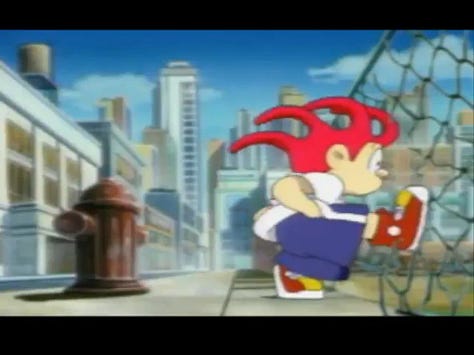
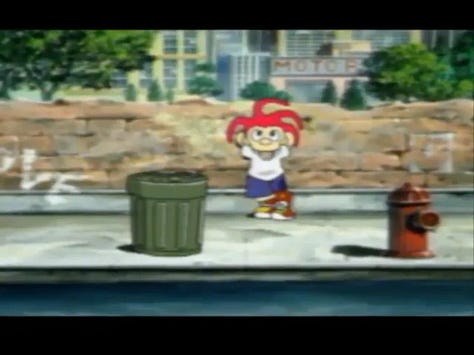
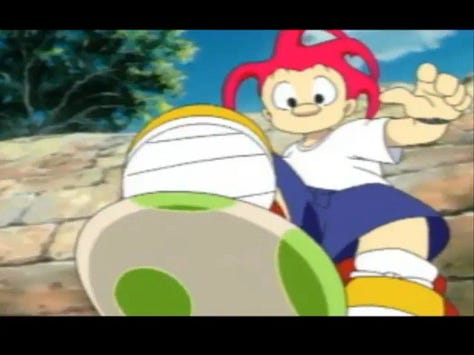
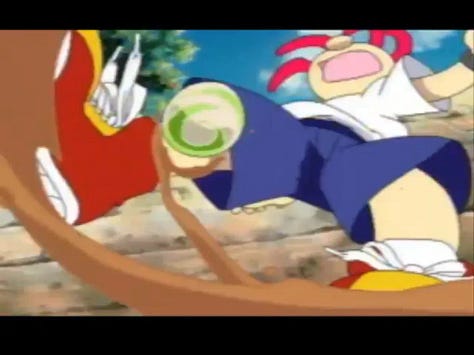
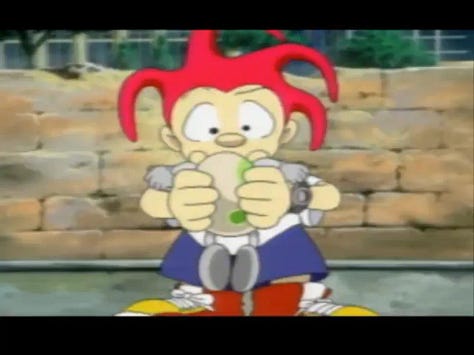
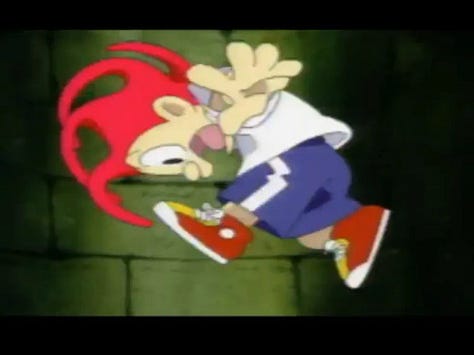
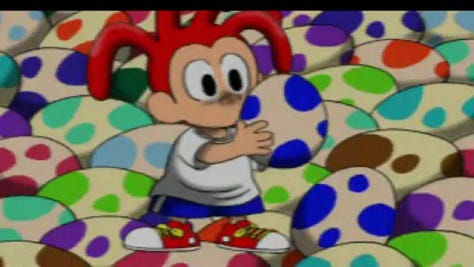
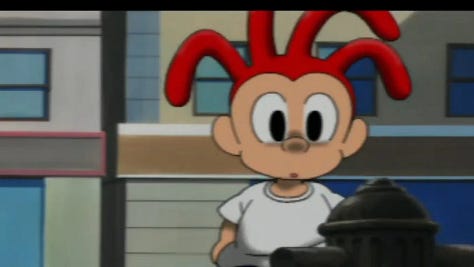
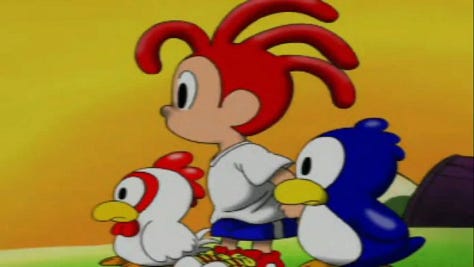

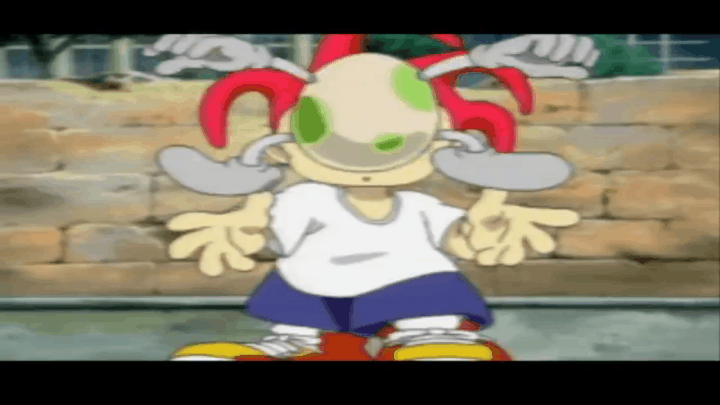
Hermie Hopperhead (v.b. Urara Takano) is a 10-year-old boy and the game’s main protagonist (including the spiritual successor Tamago de Puzzle) who lives in a city that is heavily modeled after New York City. His mouth isn’t visible when he’s not speaking, similar to Sanrio’s Hello Kitty. Hermie has red Bob Marley-inspired dreadlocks as his hairstyle and either black or brown eyes. He consistently wears a white ultra-baggy T-shirt, blue ultra-baggy Peppermint Patty-inspired shorts with two vertical white stripes on each side, and red, white, and yellow Chuck Taylor-inspired sneakers (albeit without socks).
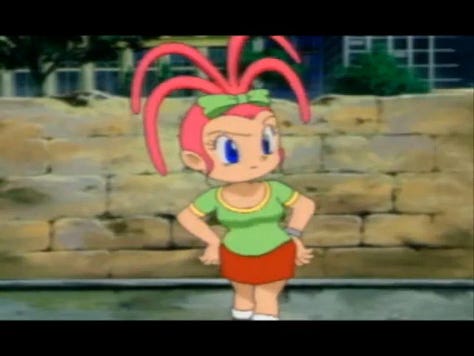
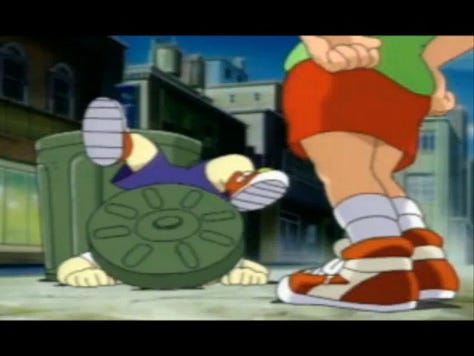
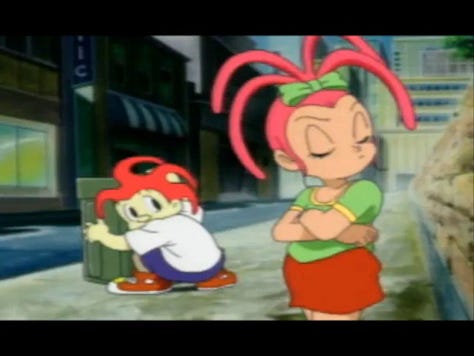
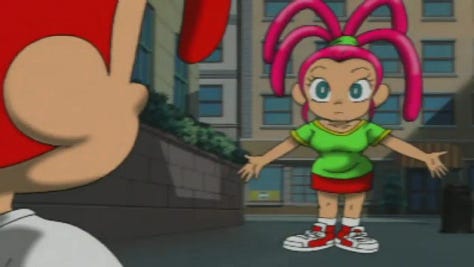
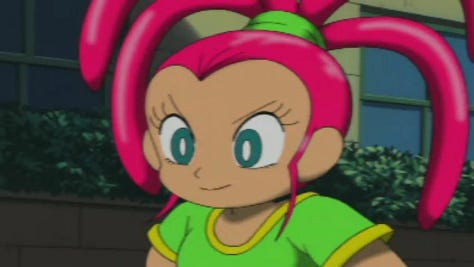
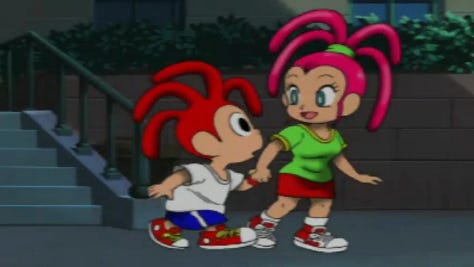
Trish (v.b. Reimi Horikawa a.k.a. REIMY) is Hermie’s 14-year-old girlfriend. At the end of the first game, she told him that he is “6 minutes and 49 seconds late”, as she was later confronted by Hermie. She calls him a “sweet kid”. In Tamago de Puzzle, she gets kidnapped; at the end of the game she rubs one of his cheeks with her finger and kisses him, forming the word “END.” Trish has pink hair with Stephen Marley-inspired dreadlocks tied in a ponytail and blue eyes (Sailor Moon-inspired eyes in Tamago de Puzzle). She consistently wears a green and yellow T-shirt, a red skirt, white socks, and red and white Nike Air Force-inspired sneakers (albeit without the straps). Trish appears to be taller than Hermie.
Tamago de Puzzle (which translates to “Egg Puzzle”), a spin-off puzzle game released in mid-1999, has the same characters from the first game. It may be considered a spiritual successor to the first game. The gameplay looks similar to the Puyo Puyo games but with polka-dotted eggs. It is possible that Sony and Yuke’s both dropped the Hermie Hopperhead trademark (including the characters and story), as only two games were made. Like the first game, it was released only in Japan.
This article was originally posted on Medium on May 26, 2019.
It was then known as Sony Computer Entertainment prior to 2016.


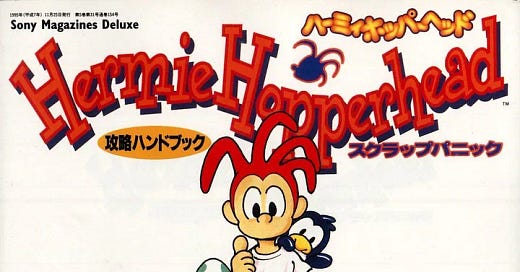



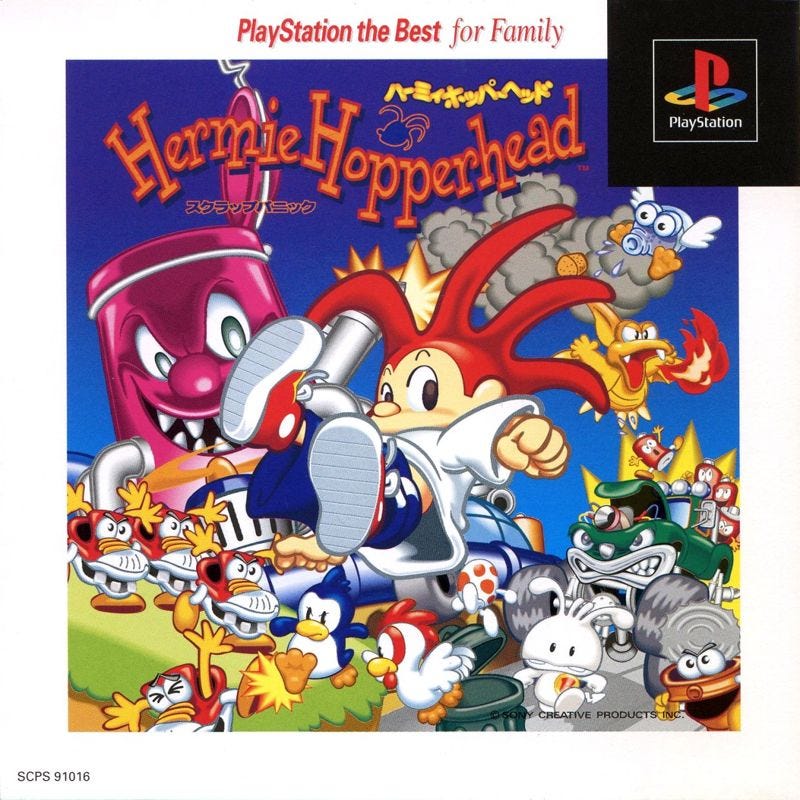




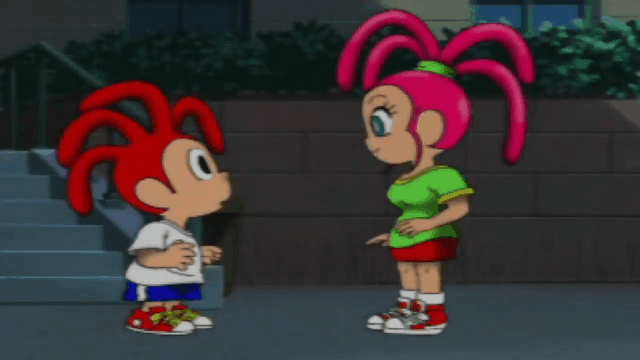
![Amazon.com: Tamago de Puzzle [Japan Import] : משחקי וידאו Amazon.com: Tamago de Puzzle [Japan Import] : משחקי וידאו](https://substackcdn.com/image/fetch/w_1456,c_limit,f_auto,q_auto:good,fl_progressive:steep/https%3A%2F%2Fsubstack-post-media.s3.amazonaws.com%2Fpublic%2Fimages%2Fd90f3db6-e5a0-4257-b125-8d8dc892c077_1000x986.jpeg)